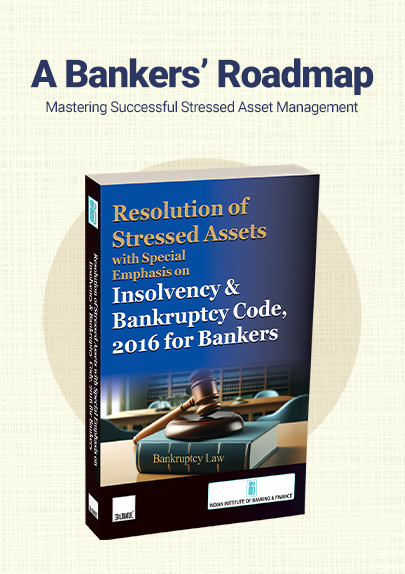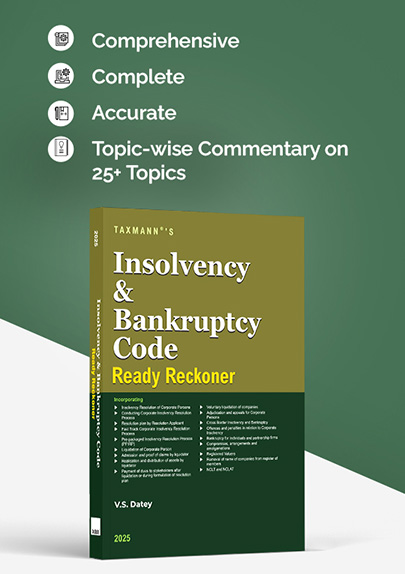Cash Flow Statement | Guide to Accounting Standard 3
- Blog|Account & Audit|
- 6 Min Read
- By Taxmann
- |
- Last Updated on 21 March, 2025
A cash flow statement is a financial report showing how cash moves in and out of a business over a specific period. It classifies cash inflows and outflows into operating, investing, and financing activities, giving valuable insights into the company’s liquidity, solvency, and overall financial health. By examining where cash comes from and where it goes, the cash flow statement helps stakeholders assess a firm’s ability to generate income, manage expenses, and sustain operations effectively.
Table of contents
- Introduction
- Applicability
- Features
- Cash Flow From Operating Activities
- Interest
- Dividend
- Cash Flow From Foreign Currency Transactions
- Extraordinary Items
- Treatment of Tax
- Cash Flow Relating to Investments in Associates, Subsidiaries and Joint Venture
- Reporting Cash Flow on Net Basis
- Cash Flow Relating to Acquisition or Disposal of Subsidiaries
- Non-cash Transactions
- Disclosure of Cash and Cash Equivalents
Check out Taxmann's Students' Guide to Accounting Standards (Adv. Accounts) | Study Material which comprehensively covers AS-1 to AS-29 and introduces Ind AS through theoretical rigour and practical insights. Its exam-focused design features step-by-step examples, practice questions, and past exam papers for targeted revision. Drawing on decades of teaching experience, the authors present complex accounting concepts in a lucid, student-oriented manner. Updated amendments, structured chapters, and end-of-chapter summaries ensure conceptual clarity and strong exam readiness. CA Inter | New Syllabus | May/Sept. 2025 Exam
1. Introduction
Cash flow statement is additional information to user of financial statement. This statement exhibits the flow of incoming and outgoing cash. This statement assesses the ability of the enterprise to generate cash and to utilize the cash. This statement is one of tools for assessing the liquidity and solvency of the enterprise.
2. Applicability
This Standard applies to all companies except One Person Company (OPC) and small companies and Dormant Company/inactive company.
“One Person Company” means a company which has only one person as a member.
“Small Company” means a company, other than a public company:
- Paid-up share capital of which does not exceed fifty lakh rupees or such higher amount as may be prescribed which shall not be more than five crore rupees; and
- Turnover of which as per its last profit and loss account does not exceed two crore rupees or such higher amount as may be prescribed which shall not be more than twenty crore rupees.
Following are not the “Small Company”:
- A holding company or a subsidiary company;
- A company registered under section 8 for charitable purpose;
- A company or body corporate governed by any Special Act; or
- A public company.
3. Features
Cash flow statement explains cash movement under the following three different heads namely:
- Cash flow from operating activities.
- Cash flow from investing activities.
- Cash flow from financing activities.
Sum of these three types of cash flow reflects net increase or decrease of cash and cash equivalents
- Cash – It consists of cash in hand and demand deposits.
- Cash equivalent – It consists of short-term highly liquid investment having original maturity less than three months, which can be readily converted, into cash without decline of its value. In other words, these investments can be converted into cash without any risk.
3.1 Operating Activities
They are principal revenue producing activities of the enterprises other than investing and financing activities. Examples of cash flows from operating activities are as follows:
- Cash receipts from the sale of goods and the rendering of services;
- Cash receipts from royalties, fees, commissions and other revenue;
- Cash payments to suppliers for goods and service;
- Cash payments to and on behalf of employees.
3.2 Investment Activities
The activities of acquisition and disposal of long-term assets and other investments not included in cash equivalents are investing activities. They include making and collecting loans, acquiring and disposal of debt and equity instruments, property and fixed assets etc. Examples of cash flows arising from investing activities are:
- Cash payments to acquire fixed assets (including intangibles). These payments include those relating to capitalization, research and development costs and self-constructed fixed asset;
- Cash receipts from disposal of fixed assets (including intangibles);
- Cash payments to acquire shares, warrants or debt instruments of other enterprises and interests in joint ventures (other than payments for those instruments considered to be cash equivalents and those held for dealing or trading purpose);
- Cash receipts from disposal of shares, warrants or debt instruments of other enterprises and interests in joint ventures (other than receipts from those instruments considered to be cash equivalents and those held for dealing or trading purposes).
3.3 Financing Activities
Are those activities which result in change in size and composition of owners capital and borrowing of the organization. It includes receipts from issuing shares, debentures, bonds, borrowing and payment of borrowed amount, loan etc.
- Sale of share
- Buy back of shares
- Redemption of preference shares
- Issue/redemption of debentures
- Long-term loan/payment thereof
- Dividend/interest paid
4. Cash Flow From Operating Activities
It can be derived either from direct method or indirect method.
- Direct Method – In this method, gross receipts and gross payment of cash are disclosed.
- Indirect Method – In this method, profit and loss account is adjusted for the effects of transaction of non-cash nature.
5. Interest
5.1 Interest Received
- It is in investment activities.
- from short-term investment classified, as cash equivalents should be considered as cash inflows from operating activities.
- on trade advances and operating receivables should be in operating activities.
5.2 Interest Paid
- On loans/debts is financing activities.
- On working capital loan and any other loan taken to finance operating activities is in operating activities.
6. Dividend
6.1 Dividend Received
- For Financial Enterprises – in operating activities
- For other than Financial Enterprises in investing activities.
6.2 Dividend Paid
Always classified as financing activities.
Note – Cash flow from interest and dividend should be separately disclosed.
7. Cash Flow From Foreign Currency Transactions
The effect of change in exchange rate in cash and cash equivalents held in foreign currency should be reported as separate part of the reconciliation of cash and cash equivalents.
Unrealized gain and losses arising from changes in foreign exchange rates are not cash flows.
8. Extraordinary Items
The cash flows associated with extraordinary items should be classified as arising from operating, investing or financing activities as appropriate and separately disclosed.
9. Treatment of Tax
- Cash flow for tax payments/refund should be classified as cash flow from operating activities.
- If cash flow can be specifically identified as cash flow from investment/financing activities, appropriate classification should be made.
10. Cash Flow Relating to Investments in Associates, Subsidiaries and Joint Venture
Enterprise having investments in associates, subsidiaries and joint venture should report in the cash flow statement only cash flow between itself and the investee.
11. Reporting Cash Flow on Net Basis
In the following cases cash flow should be reported on the net basis (activities-wise)
- Cash receipts and payment on behalf of customers when the cash flows reflect the activities of the customer rather than those of the enterprise (e.g. acceptance and repayment of demand deposits by bank, funds held for customers by investment enterprise); and
- Cash receipts and payments for items in which the turnover is quick, the amounts are large, and the maturities are short (e.g., principal amount relating to credit card customers, the purchase or sale of investment and other short-term borrowing having maturity period of three months and less).
12. Cash Flow Relating to Acquisition or Disposal of Subsidiaries
- Cash flow arising from acquisition and from disposal of subsidia-ries or other business units should be presented separately and classified as investing activities.
- Total purchase or total disposal should be disclosed separately.
- The position of the purchase or disposal consideration discharged by means of cash and cash equivalents should be disclosed.
13. Non-cash Transactions
- Investing and financing transactions that do not involve the use of cash and cash equivalents should be excluded from a cash flow statement.
- Such transaction should be disclosed in the financial statements. Examples of non-cash transactions are:
-
- Acquisition of assets by assuming directly related liabilities.
- Acquisition of an enterprise by means of issue of shares.
- Conversion of debt to equity.
14. Disclosure of Cash and Cash Equivalents
- An enterprise should disclose the components of cash and cash equivalents and should present a reconciliation of the amount in the cash flow statement with the equivalent items reported in the balance sheet.
- An enterprise should disclose the amount of significant cash and cash equivalent balance held by the enterprises that are not available for use by it with explanation of Management.
Disclaimer: The content/information published on the website is only for general information of the user and shall not be construed as legal advice. While the Taxmann has exercised reasonable efforts to ensure the veracity of information/content published, Taxmann shall be under no liability in any manner whatsoever for incorrect information, if any.

Taxmann Publications has a dedicated in-house Research & Editorial Team. This team consists of a team of Chartered Accountants, Company Secretaries, and Lawyers. This team works under the guidance and supervision of editor-in-chief Mr Rakesh Bhargava.
The Research and Editorial Team is responsible for developing reliable and accurate content for the readers. The team follows the six-sigma approach to achieve the benchmark of zero error in its publications and research platforms. The team ensures that the following publication guidelines are thoroughly followed while developing the content:
- The statutory material is obtained only from the authorized and reliable sources
- All the latest developments in the judicial and legislative fields are covered
- Prepare the analytical write-ups on current, controversial, and important issues to help the readers to understand the concept and its implications
- Every content published by Taxmann is complete, accurate and lucid
- All evidence-based statements are supported with proper reference to Section, Circular No., Notification No. or citations
- The golden rules of grammar, style and consistency are thoroughly followed
- Font and size that’s easy to read and remain consistent across all imprint and digital publications are applied







 CA | CS | CMA
CA | CS | CMA


